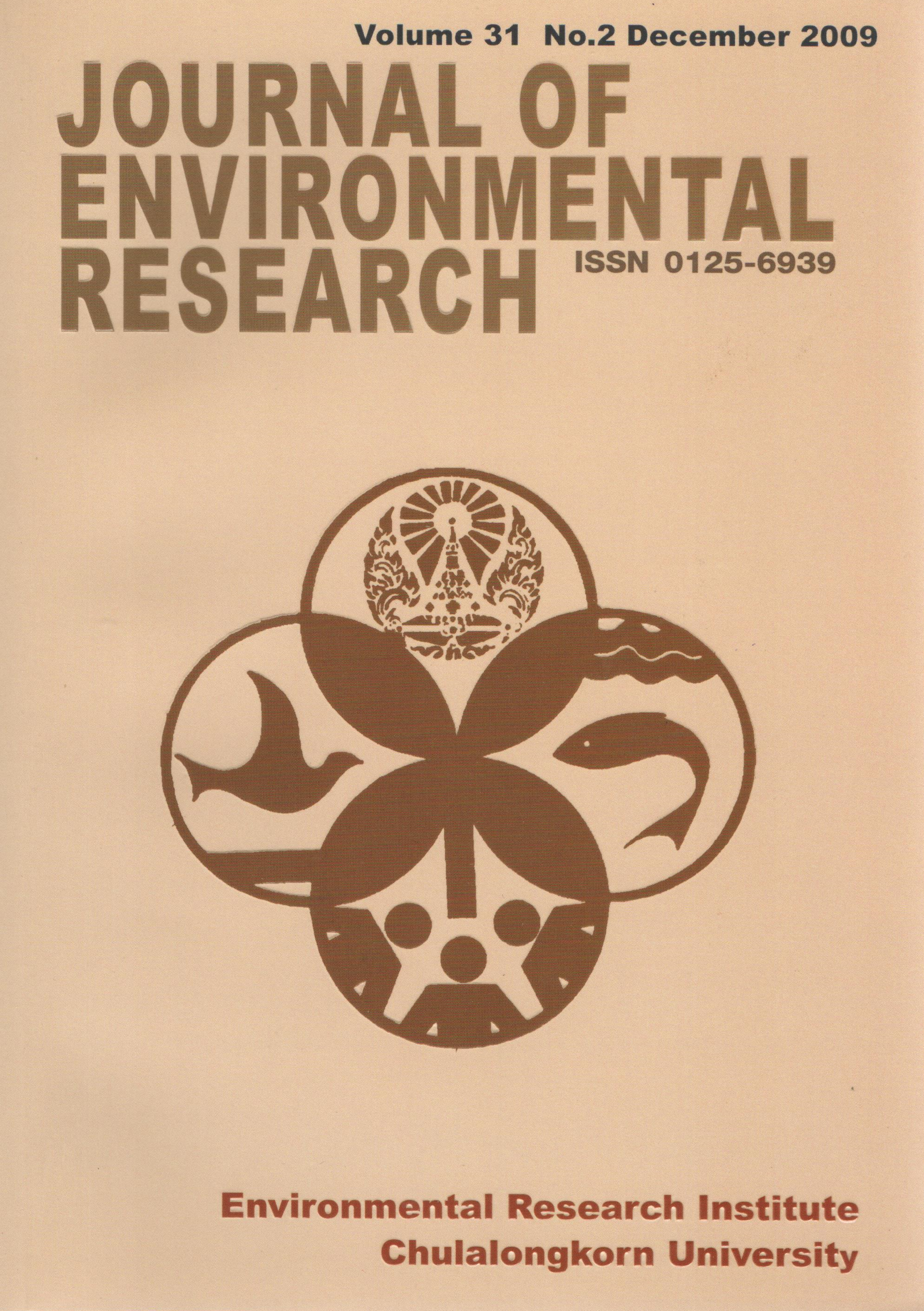Monitoring of Water Quality Using Phytoplankton, Protozoa, and Benthos as Bioindicator in Chadeebucha Canal, Nakhon Pathom Province
Main Article Content
Abstract
Water quality was monitored using phytoplankton, protozoa and benthos as bioindicators in Chadeebhucha Canal, Nakhon Pathom Province. Data was collected during 12 sampling periods at 9 stations, 4 times per month in April, August and December, 2007. Phytoplankton and protozoa were collected at the surface level and a 0.4 m subsurface level. Benthos was collected from bottom sediment in the canal. Phytoplankton collected represented 3 divisions, i.e. Cyanophyta, Chlorophyta and Chromophyta as 4 dominant genera, Oscillatoria, Euglena, Scenedesmus and Phacus, indicating low water quality. Protozoa were found as 2 phyla; i.e. Ciliophora (3 genera) and Sacromastigophora (1 genus), which are characteristic of contaminated water. Benthos collected represented 6 phyla as Arthropoda (Chironomidae as the dominant family), which were bioindicators of low water quality. The remaining organisms collected were Rotifera (4 families), Platyhelminthes, Nematoda, Crustacea and Mollusca (as Filopaludina sp.). Most samples were identified as bioindicators of low water quality at 8 stations in the Chadeebhucha Canal. Exceptions were phytoplankton of the genus Cyclotella sp. and Dinobryon sp. and benthos of the genus Filopaludina sp. found at station 2 (the bridge of Kongboey) and identified as bioindicators of clean water.
Article Details

This work is licensed under a Creative Commons Attribution-NonCommercial 4.0 International License.
Published articles are under the copyright of the Applied Environmental Research effective when the article is accepted for publication thus granting Applied Environmental Research all rights for the work so that both parties may be protected from the consequences of unauthorized use. Partially or totally publication of an article elsewhere is possible only after the consent from the editors.

